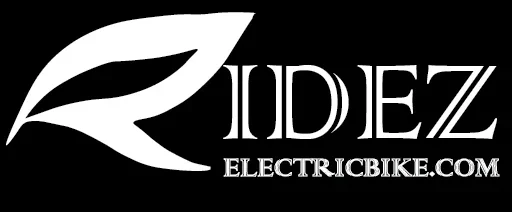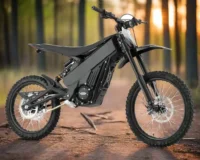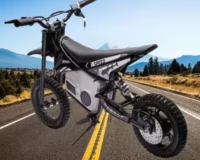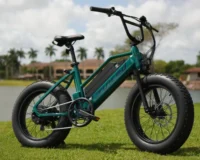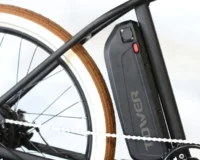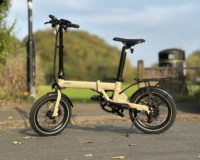Understanding Electric Trike bikes: A Comprehensive Guide
Electric trikes offer a unique transportation option that blends stability, comfort, and eco-friendliness. With their three-wheeled design, this trike bike provides a smooth riding experience, making them especially appealing to seniors and individuals with mobility challenges.
As electric trikes gain popularity, it’s crucial to grasp the legal aspects of using them on public roads. This article delves into the regulations that govern the street legality of electric trikes, helping prospective riders navigate the complex landscape of federal, state, and local laws.
What is an Electric Trike bike?
An electric trike bike (or e-trike) is a three-wheeled bicycle enhanced with an electric power-assist system. It features:
- Three-Wheeled Design: Typically configured with one front wheel and two rear wheels (or vice versa), providing enhanced stability and balance, ideal for users of all ages, particularly the elderly and those with balance issues.
- Electric Power System: Equipped with a motor, battery, and controller, this system minimizes physical exertion, especially beneficial for uphill climbs and longer distances.
- Pedal Functionality: Retaining the traditional bicycle pedal structure allows riders to either pedal manually or utilize the electric assist, offering flexibility in their riding experience.
- Speed and Range: Most models can reach speeds between 20-25 km/h, with a range of 20-100 km depending on battery capacity and riding conditions.
- Versatility: Many electric trikes come with accessories such as storage baskets and racks, making them suitable for commuting, shopping, leisure rides, and short-distance transportation.
Overall, electric trikes are a safe, convenient, and environmentally friendly transportation option that combines the flexibility of traditional bikes with the benefits of electric assistance.
Federal Regulations for Electric Trike bike
In the U.S., the Consumer Product Safety Act establishes the framework for regulating electric vehicles, including trikes. According to federal guidelines, electric trikes are generally classified as low-speed electric bicycles if they meet the following criteria:
- The motor power is under 750 watts (1 horsepower).
- The maximum speed does not exceed 20 mph (32 km/h) on flat terrain.
- They have operational pedals.
If electric trikes meet these conditions, you can use them on public roads. They do not require a driver’s license or vehicle registration.
State and Local Regulations on Electric Trike bike
While federal regulations set a baseline, state and local laws can differ significantly. Some states have embraced electric trikes with specific rules, while others may impose stricter regulations or lack clear guidelines.
For instance, California includes electric trikes under its broader electric bike regulations, permitting them on most streets and bike lanes as long as they adhere to speed limits and equipment requirements. Conversely, New York State mandates that electric trikes be registered and limits their use to specific roads.
Prospective electric trike users should check their state’s Department of Motor Vehicles (DMV) website or local ordinances to ensure compliance with applicable laws.
Classification of Electric Trike bikes
The classification of an electric trike bike can significantly impact its legality on the road. Common classifications include:
- Motorized Bicycle (MB): Typically defined as a bicycle with an engine to assist pedaling but not to propel the vehicle independently.
- Low-Speed Vehicle (LSV): Usually limited to speeds of 20-25 mph and may require registration and insurance.
The U.S. Department of Transportation (DOT) plays a crucial role in these classifications, establishing relevant standards and regulations. For example, if authorities categorize an electric trike as an LSV, it must comply with specific safety standards. These include lights, mirrors, and turn signals. It may also require registration and insurance.
Safety Standards and Requirements
Safety is critical for operating electric trike bikes on public roads. Electric trikes must adhere to several safety standards, such as:
- Having lights and reflectors for improved visibility at night.
- Installing mirrors to monitor surroundings.
- Using turn signals to signal intended maneuvers.
Additionally, many states require helmets for certain age groups or all riders, and higher-powered electric trikes classified as low-speed vehicles may require insurance and registration.
Practical Considerations
Using an electric trike bike involves various practical aspects that can depend on local infrastructure and environment. Urban areas often provide better access to bike paths and trails, while rural regions may have fewer restrictions.
Electric trikes can generally be used on bike paths and trails shared with traditional motorized vehicles, offering diverse commuting options. However, users should always verify local regulations regarding the use of electric trikes in these areas.
Parking and storage are also important considerations. Many cities have specific regulations governing where e-bikes and tricycles can be parked. This is to avoid obstructing sidewalks or violating local ordinances.
Conclusion
In summary, the legality of electric trikes on public roads is influenced by a combination of federal, state, and local regulations. While federal guidelines provide a foundational framework, state and local laws may introduce additional requirements and restrictions.
A clear understanding of classification, safety standards, and practical considerations is essential for the legal and safe operation of electric trikes. By familiarizing themselves with relevant laws, electric trike users can fully enjoy the benefits of this efficient and eco-friendly transportation option.
FAQ
Do electric trikes need to be registered and insured in the U.S.?
In most states, electric trikes are regulated similarly to electric bicycles. If their top speed is below 20 mph (about 32 km/h) and the motor power is under 750 watts, they typically do not require registration or insurance. However, regulations can vary, so it’s advisable to consult your local DMV.
What is the speed limit for electric trikes?
Speed limits for electric trikes vary by location. Generally, an electric trike can be classified as an electric bicycle or low-speed vehicle if it does not exceed speeds of 20-25 mph (about 32-40 km/h). Exceeding this range may subject the trike to stricter regulations.
Where can I park my electric trike?
You can usually park electric trikes in designated bicycle parking areas, electric vehicle parking spaces, or private parking spots. Avoid parking on sidewalks or in prohibited areas to prevent violations.
What is the range and charging time of an electric trike bike?
The range and charging time depend on the trike’s battery capacity and motor power. Typically, electric trikes can range from 20-100 kilometers with a charging time of 4-8 hours. Refer to the product manual or consult the manufacturer for specific details.
Who can benefit from using an electric trike bike?
Electric trikes are suitable for individuals of all ages, particularly seniors. Those with limited mobility, or anyone looking for convenient short-distance transportation in urban settings. Their stability and ease of use make them a great option for many people.
Can electric trikes be safely used in rain or snow?
While electric trikes resist water, you need caution in wet or snowy weather. Slippery surfaces raise the risk of accidents. Riders should reduce speed, maintain a safe distance, and ensure trikes handle adverse weather.
